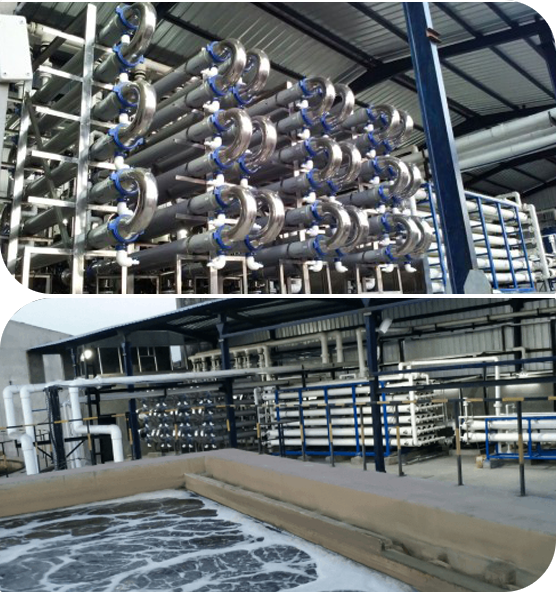
Waterman Engineers Australia is one of the major suppliers of Zero Liquid Discharge procedure. A ZLD system is really a remedy method and that is applied to get rid of the many liquid waste from a procedure. The intention of ZLD h2o treatment method is to scale back wastewater economically and generate potable water that is in good shape for usual use. Zero discharge technique is an advanced treatment system that comprises ultrafiltration, reverse osmosis, evaporation and fractional electro deionization. And we have been a effectively-known provider of ZLD techniques.
In several Industries, for instance electrical power, oil & fuel, chemical compounds, mining and Other people, a great deal of wastewater is generated that needs to be managed. Conventionally, this discharge of wastewater is done by means of a plant outfall to a floor water human body like an evaporation pond, or in some cases deep properly injected. These practices cause many environmental worries by the general public in many regions of the earth, as water can be a scarce resource and its administration ought to be monitored. These problems have resulted in the establishment of ZLD processes by a lot of industries to reduce their environmental footprint and enhance sustainability. And, Waterman Engineers Australia are greatest ZLD suppliers yow will discover for this system.
Qualities OF ZERO LIQUID DISCHARGE Technique
The Houses of the Zero Liquid Discharge procedure can vary with regards to the unique design and technologies employed. On the other hand, some prevalent Houses of ZLD techniques involve:
H2o Conservation: Amongst the first objectives of ZLD systems will be to preserve drinking water by minimizing the discharge of liquid squander in the setting.
Substantial Water Purity: ZLD systems are meant to deliver significant-good quality water that is definitely cost-free from impurities and contaminants, which makes them suitable for use in lots of industrial processes.
Flexibility: ZLD methods are often built to accommodate a broad variety of input liquid streams, that makes them flexible and well suited for use in numerous industries.
Sophisticated Wastewater Procedure: Zero liquid discharge techniques use advanced wastewater cure methods to clear away impurities and contaminants in the effluent, manufacturing higher-excellent water.
Waste Reduction: ZLD programs help lessen squander by reducing the amount of liquid waste that should be disposed of and by producing a concentrated, sound squander product that can be securely disposed of.
Electricity Performance: ZLD systems can be Electrical power-intensive as a result of substantial Electrical power requirements of evaporation and also other wastewater cure procedures. On the other hand, innovations in technology are creating Zero liquid discharge methods a lot more Vitality-productive and value-efficient.
Waterman Engineers Australia manufactures Zero Liquid Discharge (ZLD) programs intended to take away all liquid waste, aiming to provide potable water and lower environmental effects. Their ZLD units commonly incorporate ultrafiltration, reverse osmosis, evaporation, and fractional electro deionization. Essential technologies used are Falling Movie Brine Concentrators, Pressured Circulation Crystallizer, and Other individuals, having a two-step strategy of pre-concentration and evaporation/crystallization to Get better and reuse drinking water. These methods are adaptable to different industries, emphasizing drinking water conservation, higher h2o purity, waste reduction, and Electrical power effectiveness. Technological requirements are diverse and customizable, looking at variables like water source, circulation fee, and feed h2o Zld System Manufacturer Zero Liquid Discharge System excellent.
The need for Zero Liquid Discharge (ZLD) systems arises with the requirement to deal with environmental concerns connected to h2o scarcity and air pollution. In industries like electric power, oil & gasoline, and mining, vast amounts of wastewater are produced. Historically, this wastewater is discharged into bodies of drinking water, causing pollution and depleting cleanse h2o assets. ZLD methods purpose to reduce these impacts by managing and recycling wastewater inside the economic procedure, thereby conserving h2o, lessening waste, and promoting sustainability.
When considering the technical technical specs of the Zero Liquid Discharge (ZLD) process, significant factors to focus on involve the h2o source it can handle, the system's stream amount, the caliber of feed drinking water, the phases of treatment method associated, the Restoration rate of water, approaches for focus disposal, materials of building, operating ailments, and method automation and Command. These variables make sure the method's performance, durability, and effectiveness in dealing with and recycling industrial wastewater.
Zero Liquid Discharge (ZLD) vegetation give Rewards including h2o conservation, waste reduction, and pollution avoidance, contributing to environmental sustainability. They're relevant in industries like electrical power technology, oil and gasoline, chemicals, and mining, wherever they help in handling industrial wastewater correctly, cutting down the ecological footprint, and complying with rigid environmental restrictions. These devices are vital in places dealing with h2o scarcity and for industries aiming to boost their sustainability and operational effectiveness.
FAQs for just a Zero Liquid Discharge (ZLD) program normally deal with its operational rules, Price-performance, routine maintenance requirements, environmental impact, applicability across several industries, and regulatory compliance. These questions support buyers realize the process's benefits, specialized needs, and suitability for his or her precise wastewater administration needs.
1. Zero Liquid Discharge (ZLD) is actually a wastewater cure system made to eradicate all liquid waste.
2. The program's elements are motivated by the particular industrial method, wastewater composition, and regulatory demands.
three. Effluent treatment method vegetation take away pollutants from textile effluents to avoid environmental contamination.
4. Positive aspects incorporate drinking water conservation, pollution reduction, and regulatory compliance.
five. The intention is to reduce environmental impression by recycling drinking water and lowering waste.
six-nine. Effluent remedy plants are levels in wastewater cure: primary (Bodily separation), secondary (Organic procedure), and tertiary (State-of-the-art treatment method).
10. Device operations consist of filtration, sedimentation, Organic treatment method, and disinfection.
11. Restricting parameters are aspects that have an effect on the therapy's performance, like pH and contaminant concentration.
twelve. Design and style concerns involve stream price, effluent composition, and desired excellent of handled h2o.